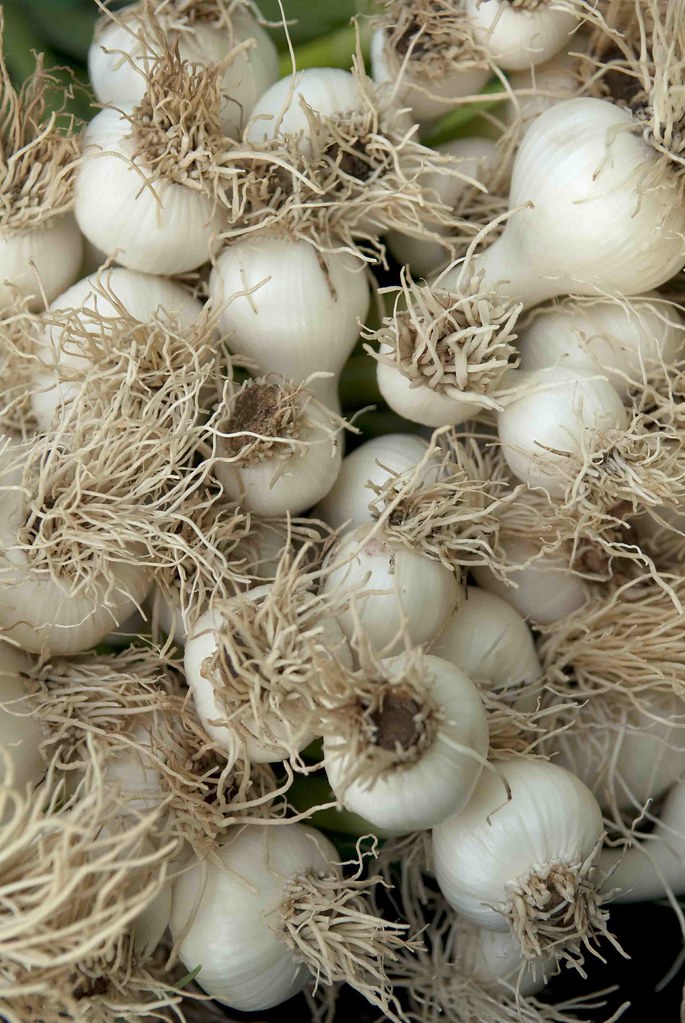Tip of the Week: How to Grow Garlic
Posted in Gardening Tips on November 2 2009, by Sonia Uyterhoeven
 |
Sonia Uyterhoeven is Gardener for Public Education. Join her each weekend for home gardening demonstrations on a variety of topics in the Home Gardening Center. |
 Garlic has been around since the beginning of time. As early as 2500 BC pharaohs were feeding garlic to their laborers to keep them strong and healthy while they built pyramids. The ancient Greeks viewed it as a cure-all. Physicians carried garlic cloves in their pockets during the Great Plague to ward off disease. The British used garlic juice in preparing makeshift bandages during WWI.
Garlic has been around since the beginning of time. As early as 2500 BC pharaohs were feeding garlic to their laborers to keep them strong and healthy while they built pyramids. The ancient Greeks viewed it as a cure-all. Physicians carried garlic cloves in their pockets during the Great Plague to ward off disease. The British used garlic juice in preparing makeshift bandages during WWI.
Beyond medicinal uses, garlic has a colorful history. In Medieval times people carried garlic in their pockets as protection from witches and vampires. Braided garlic was hung above cradles to prevent fairies from stealing sleeping infants. In the Middle East it was an aphrodisiac that grooms would stick on their lapel to bless their wedding night.
While much of a garden is planned and planted in the spring, garlic is best planted as a fall crop, treated like any other hardy bulb. Planting in the fall enables the plant to develop a good root system but no top growth so that in the spring, once the temperatures warm up, it is ready to go.
Garlic likes full sun and good drainage, and generally benefits from the addition of compost, cow manure, or leaf mold. Heavy soil should be turned: Loose soil is important for good bulb formation.
In the New York area garlic is generally planted in October and November. Take a nice fat bulb and split it apart into individual cloves. Use the larger cloves in the garden and leave the smaller ones for your skillet. (As with other bulbs, a larger bulb has more food storage capacity, so you get a larger, healthier plant.) Plant the cloves 1–2 inches deep and 4–6 inches apart.
In this area and in cooler regions it is a good idea to mulch the garlic with 2–3 inches of straw once the ground is frozen to prevent frost heaves or damage during the winter months. Remove the straw in the spring and top dress with compost.
The vegetable guru Eliot Coleman advises that garlic should not be planted where any member from the cabbage family was growing; apparently this can inhibit the garlic’s growth up to 60 percent. Other sources tell you not to plant garlic in the same location where any member of the onion family had been growing.
Garlic has a talent for adapting to local conditions. Try a number of varieties and see which ones work best for you.
There are two major types of garlic—hardneck and softneck. Softneck garlic varieties (Allium sativum, Sativum group) include silverskin and artichoke garlic. These are the supermarket varieties that lack a woody stem and store well (from 6 months to 1 year).
Hardneck garlic varieties (Allium sativum, Ophioscordon group) have woody stems, tend to be cold hardy, but don’t store as well (generally only up to 6 months). Chefs claim the flavor of hardnecks is unrivaled. This group includes purple-striped, porcelain, and rocambole types.
When starting out, remember to buy your garlic bulbs from a grower. Some options are Johnny’s Select Seeds, Seeds of Change, and Seed Saver’s Exchange. It is not recommended that you use garlic purchased at the supermarket as they are often treated to prevent sprouting.

